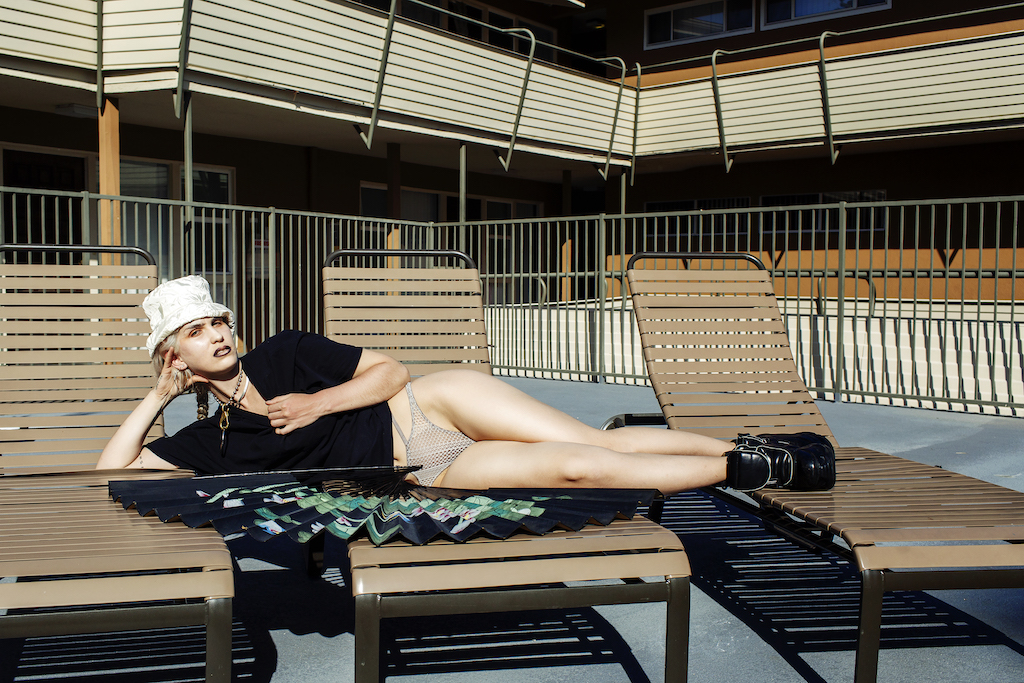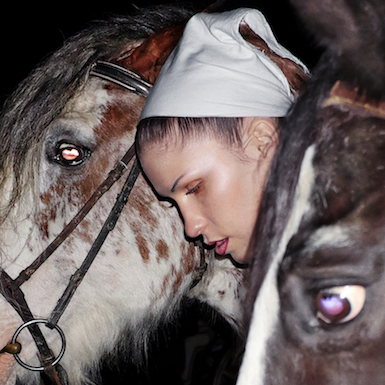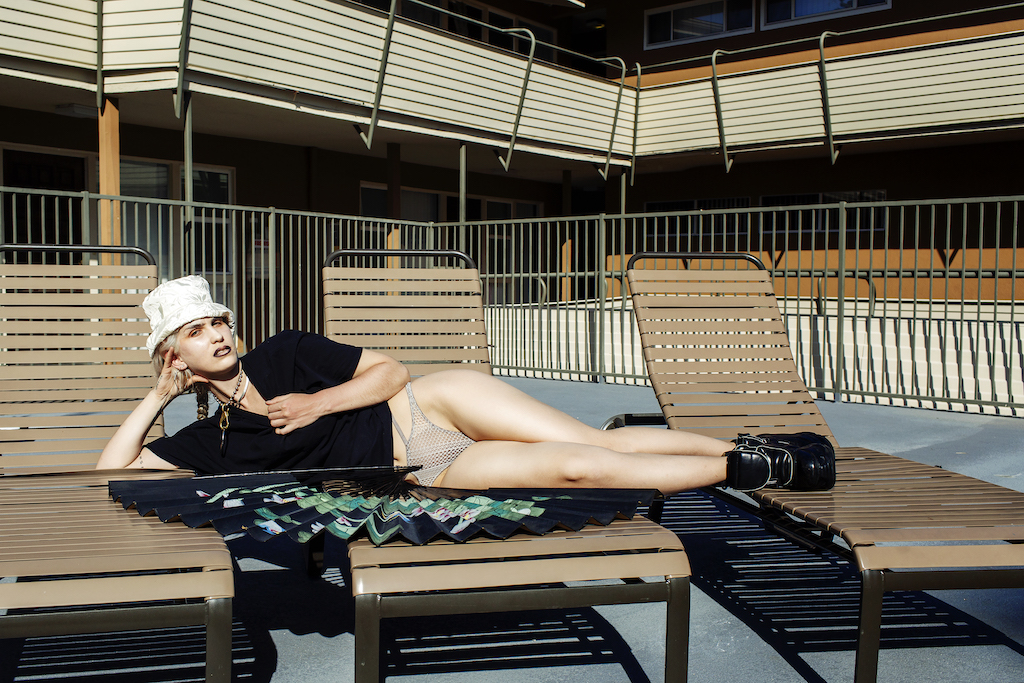[ad_1]

Eartheater.
SAMANTHA WEST
“Muses” is a column for which creators from different disciplines reveal sources of artistic inspiration and instigation.
Eartheater is a New York-based musician whose sound tends toward extremes of ethereal beauty and empowering abstraction. Her new album, ISIRI, was released by the revered experimental-music label PAN, and her live performances have garnered attention for their contorted, confrontational viscerality. For the latest “Muses,” Eartheater told ARTnews about some of her favorite art and artists of late. —The Editors
Ivana Bašić
In spite of looking dead or close to death, Ivana Bašić’s sculptures are so uncanny and alive. The first two pieces I saw of hers were Population of Phantoms Resembling Me #2 and Stay Inside or Perish (both from 2016) at Andrea Rosen gallery in New York. If I were to choreograph the feeling I had when I first laid eyes on them, I would hold my breath until everything melts away to the hyper-conscious remembrance of how blessed every breath is. I would wait for the ringing in my ears and the twitching of my jugular. Then I’d taste the air and feel my blood again.

Cover art for Eartheater’s IRISIRI.
COURTESY PAN
I’m a reckless performer. I push myself to the brink, testing how I fit together. I contort myself. A shape that I exhaust is my ouroboric backbend—I can kiss my heels from behind. In yoga, they say it’s the ultimate emotional opener, and one of the worst feelings is when I’m on stage and I can’t access emotions to deliver a truly genuine performance, so I often incorporate deep backbends into my movement. I almost always feel the chemical alteration of a more-alive and emotive state after trusting my suspension and compressing my spine. Ivana’s work does something similar to me. I haven’t seen it in person but in my obsessive drooling over photos I found documentation of her 2016 exhibition “Throat Wanders Down the Blade.” One of the sculptures in it is part of a bodily figure, and its suspended backbend and shiny transparent wax skin stretched over a glassy rib cage haunt me.
Georges Bataille
I was 18 when I read Georgess Bataille’s Story of the Eye and The Impossible. I was couch-surfing, going to hardcore punk shows in basements, and sneaking into the School of Visual Arts sculpture building looking for trouble and community. I had a boyfriend who gave me The Impossible—a terrible and wonderful curse because it tuned me into a chronic romantic with a taste for chaos (or maybe it affirmed this same taste already in me). I absorbed Bataille’s erotic grotesque surrealism like a sponge. I can quote his poetry though I never actively memorized it. His words are my thoughts now. When I go to the beach I think of his line about the ocean constantly jerking off. Then there’s “I believe that truth has only one face: that of a violent contradiction.” I find affinity in Bataille’s anti-absolutism.
FlucT
Monica Mirabile and Sigrid Lauren are friends so I’ve been able to see how they work intimately. They’ve impacted me so deeply that I can’t imagine who I would be without them. Bits of symbolic poetry both sincere and silly flake off of them. They’re constantly building on their lexicon. As obsessed as I am with lyrics, it was Monica who reminded me to embrace the idea of poetry as a state of mind as opposed to just a text-based endeavor. Her encouragement made me feel better at expressing myself by not feeling so pressured to pander to pedantic expectations. I have always felt like I’m holding back—maybe that’s why I go so hard in my performances. I still feel like I’m not fully unleashed, but I’ve come incredibly close to feeling relief while witnessing FlucT’s performances.

Still from Harmony Korine’s Mister Lonely.
COURTESY IFC FILMS
Harmony Korine
One of my favorite scenes in film is from the poorly reviewed Mister Lonely. The film had a subplot about a convent of nuns and their priest (played by Warner Herzog), and, in the scene, nuns are jumping out of a small airplane. They jump to prove their purity to God, believing they won’t perish because God will grant them a miracle. You see their blue habits against a blue sky. You see a nun do a BMX flip on a bike. In the scene before, the abbess of the convent gives a motivational sermon about how they will fly through the sky, while the Silver Mt. Zion song “13 Angels Stand Guard Around Your Bed”—one of my most beloved pieces of music—begins to play. Herzog speaks in a way that sounds like he’s reciting poetry but it appears he is just speaking from his heart—then the abbess’s tender voice continues. The epicness of spoken word over emotive music is scarily moving to me. It touches the heart so deeply that it can be dangerous. I grew up hearing many lulling prayers over beautiful chanting in churches and monasteries, and I find myself using it in my music a lot.
Women’s History Museum
I only recently became aware of the fashion collective Women’s History Museum, and I love the way they stitch and pin together fabrics and textures for resourceful juxtapositions full of negative space. I remember thinking about them specifically when I recorded a sample from the Disney movie Beauty and the Beast onto my 404 sampler out of an airplane’s headphone jack. I think I take a similar approach to music as they do to fashion. I don’t know if the fabric and materials they use are scraps or found bits, but it certainly seems that resourcefulness and intuition are huge aspects of what they do. I’ve been self-conscious and almost secretive about how I’ve recorded a good portion of my vocals or samples just using a computer or a phone mic, but they make me want to be more open about my process. Something ethereal and moving transcends the usual functions of clothing in WHM’s work, and music transcends gear—not the other way around.
[ad_2]
Source link

